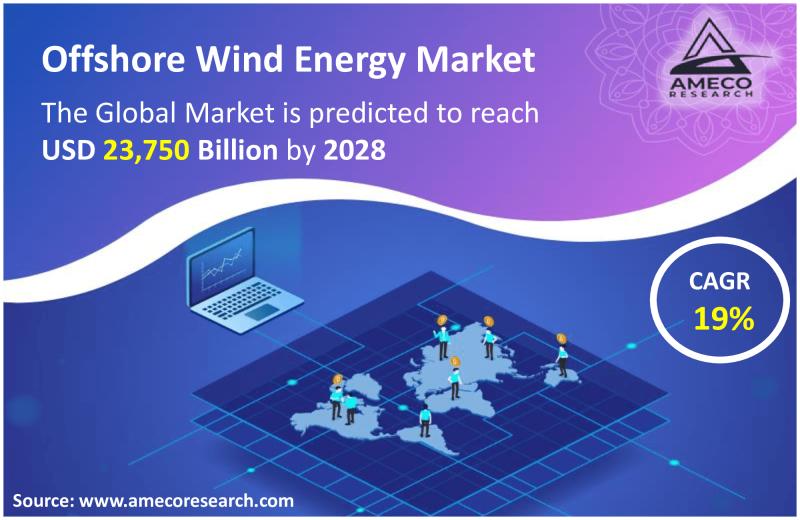Offshore Wind Energy Market: Detailed Analysis and Forecast Report
The Offshore Wind Energy Market report by Ameco Research presents an in-depth analysis of the industry’s growth, trends, and market segmentation. It also examines key companies, SWOT, PORTER and PEST analysis, market maturity, and value chain analysis. The report predicts that the growth of the Offshore Wind Energy Market will stabilize in the coming years.
Furthermore, the research provides a comprehensive solution for decision-makers and academicians seeking both qualitative and quantitative analyses for the historical period and the upcoming years. The report includes an industry overview along with potential threats and supporting factors that may either drive or hinder market growth and provide future opportunities.
The Offshore Wind Energy Market is finely segmented to focus on the most significant and responsive aspects of the market. The report also covers detailed information on major geographic regions including the United States, European Union, China, Japan, India, Korea, and Southeast Asia.
Market Segmentation:
The market is segmented by Installation types such as Floating Structures and Fixed Structures, and by Water Depth which includes Up to 30m and Above 30m.
Moreover, the report employs strategic tools like Value Chain Analysis, Supply Channel Analysis, Porter’s five forces model, and others to help for an easy understanding and analysis of the overall information in a systematic way.
Key Players:
The report identifies the market’s major players including Siemens Gamesa Renewable Energy, S.A., Prysmian Group, Enessere, Suzlon Energy Limited, Vestas, Sumitomo Electric Industries, Ltd., LS Cable & System Ltd., Southwire Company, LLC., goldwind.com, WEG, NORDEX SE, RTS Wind AG, ENVISION GROUP, and smart dolphin Gmbh. The report provides insights into their product offerings, revenue contributions, regional presences, strategic developments, and business strengths.
This report addresses key questions about market evolution, key product level trends, market level trends, leading market players and their strategies, and the most lucrative regions in the market space. The Table of Contents of the report provides a detailed view of the coverage.
About Ameco Research: Ameco Research provides comprehensive research reports covering a wide range of market categories and sub-categories. Their alliance publishers cater to specific business verticals, enabling them to suitably respond to client requirements and identify potential market opportunities.
Contact Us:
Mr. Richard Johnson
Ameco Research
India: +918983225533
E-mail: sales@amecoresearch.com
Address: 201, Vaidehi-Saaket, Baner – Pashan Link Rd, Pashan, Pune, Maharashtra 411021
Note: This information was originally published on openPR.
Original Story at www.openpr.com
